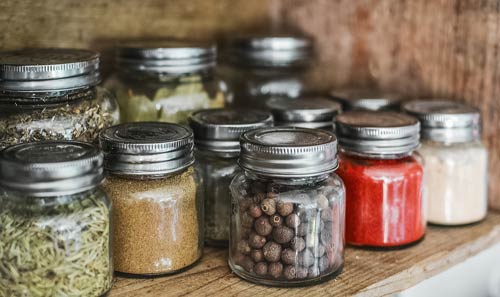This is the fourth article in our blog series with tips on how to reduce your plastic waste. Some of the tips are not for everyone; the alternatives can initially be more expensive, but many may save you money in the long run. This time we are looking at how to reduce plastic in your kitchen. You can read the other articles on how to reduce your plastic consumption here.
We will be covering:
- How to reduce plastic when food shopping
- How to store food without plastic
- How to clean dishes without plastic
Reduce Plastic When Food Shopping
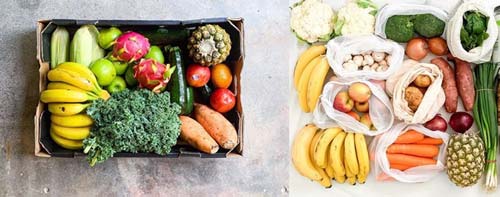
Having access to and being able to afford everything in a package free store is a privilege. They are usually found in the major cities, and you’re lucky if there’s one near you in a small town or village. So we are going to give you some tips on how to reduce your plastic when shopping in your normal supermarkets and farmers markets.
Bring A Bag
Most places in the world have markets, whether only on weekends or permanently. This is a great way to support local businesses as well as buying loose vegetables, fruits and potentially herbs and spices. Often they will weigh your produce and place it in a plastic bag. However, bringing your own ‘bag for life’ or tote bag will help get around this. Cloth produce bags are great for storing your produce, especially if you want to keep things separate to ensure they’re not squashed. If you don’t want to splash out, bringing a cardboard box is a very cost effective and efficient method of carrying your produce home.
You can buy cotton produce bags from many places online, for example:
Alternatively, if you have scrap cotton at home, you can easily make your own for a fraction of the price. If you’re not good with a needle, you can even make cotton produce bags out of old t-shirts: All you need are scissors! This is a great way to upcycle too and takes only around 5 minutes.
Bring Your Own Containers
Glass jars are something we usually all have at home from buying preserves, pickled vegetables and sauces. Keeping these and reusing them is a great way to reduce plastic in your kitchen. You can take them to the market or supermarket and get your herbs refilled, or even items like olives and cheese! Buying these items over the counter at your supermarkets can help reduce your plastic use.
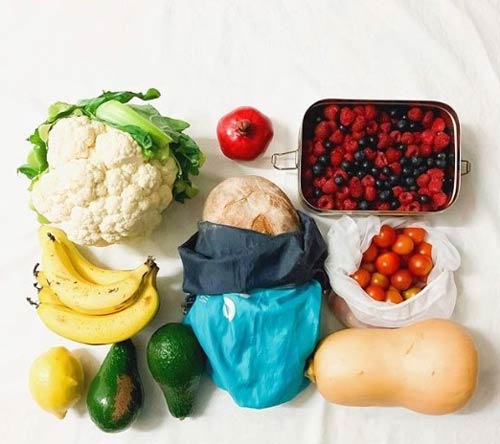
If you’re a meat eater, you may have noticed that meat is always packaged in plastic. However, buying from a butcher or over the counter in your supermarket can help get around this. Bring your own Tupperware box and ask the butcher to place your meat straight in the box instead of wrapping it in plastic. You can do a similar thing with bread; visit a local bakery for a fresh loaf and store in tea towels or a cloth bag! You might have noticed by now its all about bringing your own containers!
Sustainable Food Storage
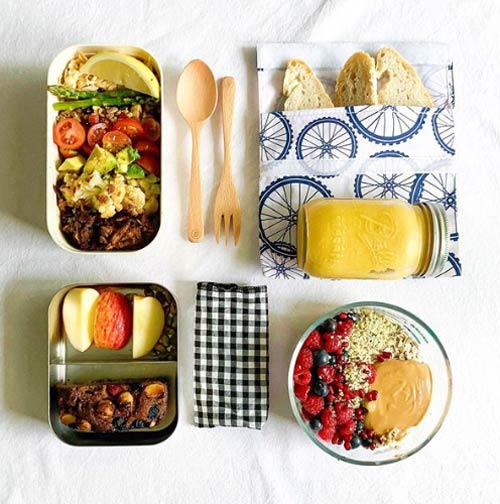
Storing food can be equally as plastic consuming as buying your food. Purchasing cling film, tin foil and plastic ziplock bags all contributes to consumption. Here are some tips to plastic free food storage alternatives to reduce plastic in your kitchen:
Bees Wax Wraps
The best way to replace cling film and tin foil for food storage is bees wax wraps. This is just cloth that is coated in bees wax. It moulds to whatever container or item you want it to. However, it doesn’t have the same hygiene level as cling film, so it is not suitable for food vendors. Bees wax wraps can be hand-washed in cold water with soap; this prevents the wax from melting when you clean it.
You can buy bees wax wraps online from several eco stores, such as BeesWrap and Boobalou . It is rather expensive with 3 wraps costing £15, however, they can be reused over and over again. As a cheaper alternative, you can actually make bees wax wraps at home: Using fabric, beeswax beads, scissors, parchment paper, baking tray and a brush.
After a few years of use, whether they are store bought or made, bees wax wraps will lose their stick, so you can top the wax up with this method also.
If you’re not into fancy wraps but want to keep your left overs fresh and plastic free, you can – as always – use what you’ve got!
- Fill an empty jar with the sauce you made
- Fill a jar with the pasta you’ll have for lunch tomorrow
- Use a bowl and a plate as a lid and store in the fridge
As you can see, covering everything in foil and cling film isn’t the only option. You will benefit your pocket, the planet, and your health by using anything but plastic.
Unappreciated Ice Trays
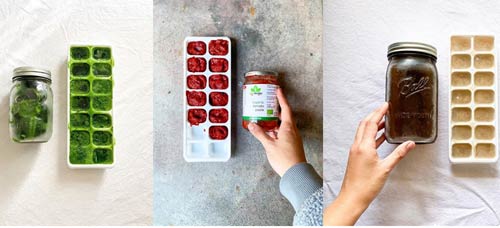
Another friend of ours is our unappreciated ice trays!
- After opening tomato paste, it often goes to waste as using it in 3 days is not possible
- Finishing fresh herbs before they wilt is difficult if you’re not cooking for a big group
- Making stock from scratch, but not being able to use it up in time, is also a waste
Separating these into ice trays means you can keep them fresh and just pop them into a dish you are cooking when you need them – no prep needed! This is a fantastic and affordable way to reduce food waste and plastic.
Eco Friendly Kitchen Cleaning
We use many plastic products to clean our kitchen, from the sponge to the kitchen roll packaging. Here are a few tips to help reduce your plastic consumption:
Reusable Kitchen Squares
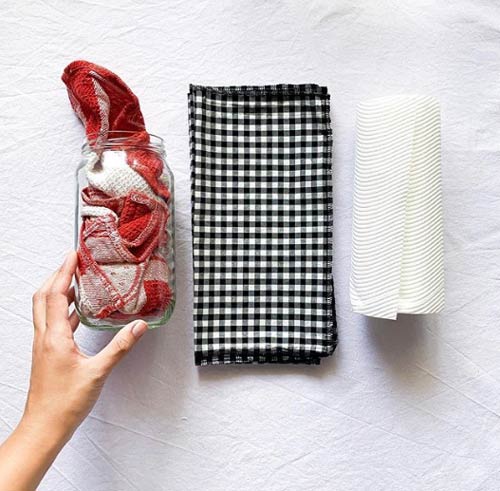
Buying kitchen roll again and again not only hurt ours forests, but also produces more plastic. Why not just use what you have? We all have clothes or towels we don’t use anymore. Instead of throwing them into a landfill, cut them up and use as a replacement for kitchen roll. When its dirty, throw it in the washing machine and out pops a fresh new kitchen roll square that is just as absorbent as your overpriced kitchen roll. Store in a jar or box for convenience.
Eco Friendly Dish Cleaners
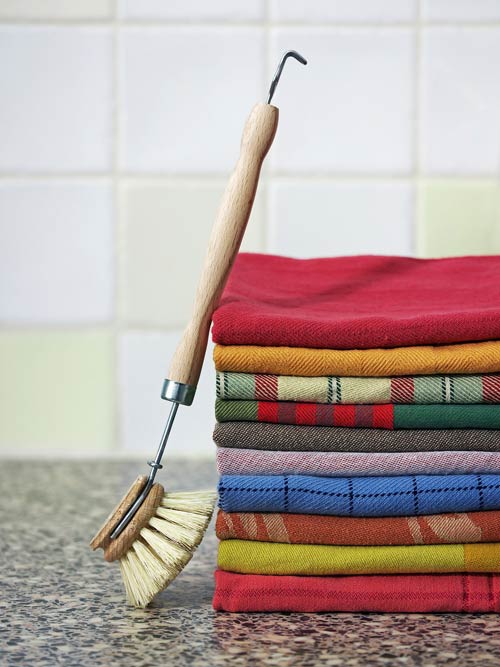
When cleaning dishes we either use a plastic sponge or a metal scouring pad – which both comes packed in plastic. Why not opt for wood? It degrades, it is strong, its not that much more expensive, and it is an easy way to reduce plastic in your kitchen.
Here are some items you can replace:
- Dish brush (with a replaceable head)
- Coconut Scourer
- Replacement Sponge
- Bamboo Pot Scraper
- Soap Bars
Upcycle And Make A Real Difference
The great thing about reducing plastic in your kitchen is that most of it is just upcycling what you have already. It is an affordable way to reduce your plastic and can make a real difference. It is difficult to reduce plastic when shopping for food if rice and pasta are only sold in plastic in your area (for example). Doing what you can is great; its all about reducing, not cutting it out altogether at once!
Disclaimer
References in this article to any specific commercial products by trade name, trademark, manufacturer, or otherwise, does not necessarily constitute or imply its endorsement, recommendation, or favouring by the Olive Ridley Project. The views and opinions of authors expressed herein do not necessarily state or reflect those of the Olive Ridley Project and shall not be used for advertising or product endorsement purposes.


